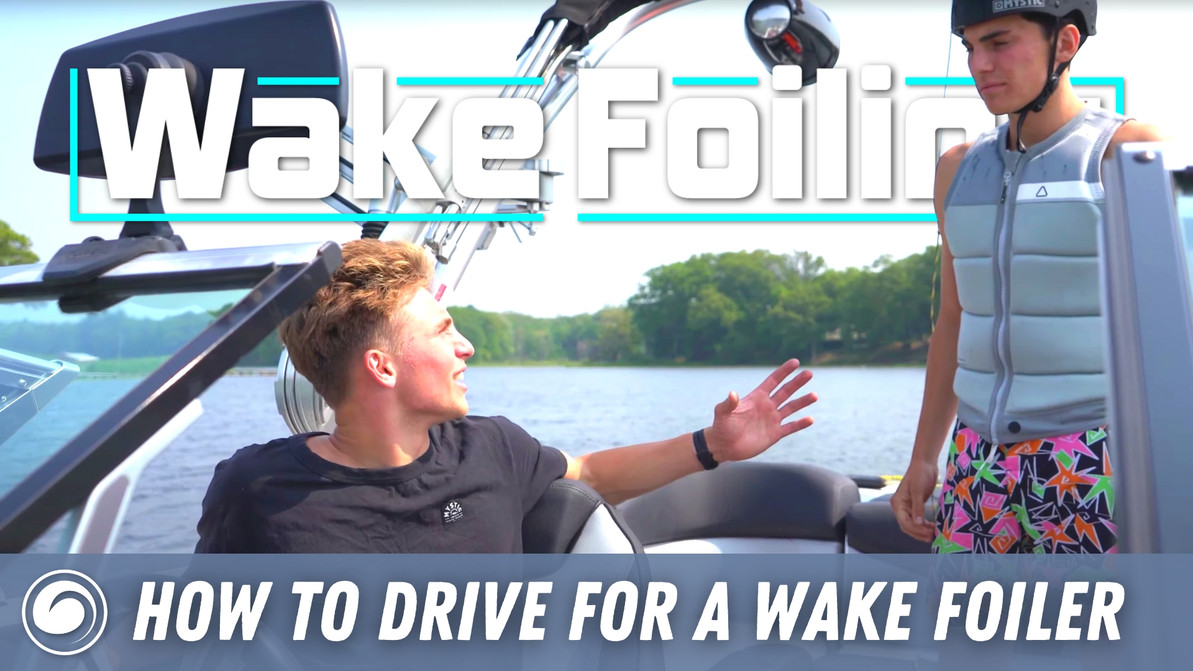Wake Foiling | How to Drive Your Boat for a Wake Foiler
Driving your boat for a wake foiler can indeed feel like a daunting task. Pushing the gas too hard sends the rider shooting out of the water, while going too slow fails to help them rise at all.
Here, we share three key tips that can help you turn this challenging task into a smooth ride. These tips cover essential aspects such as communication, consistent speed, and a comfortable pace at which to pull your rider up.
1. Effective Communication: A Must for a Smooth Wakefoiling Experience
Without good communication in the boat, wake foiling can quickly turn into a frustrating experience. Therefore, before anyone hops into the water, it's crucial to establish a clear line of communication between the spotter, driver, and rider.
Sign Language is Your Best Friend
Develop a simple yet effective sign language system to communicate speed control effectively. 'Thumbs up' could mean 'go faster,' while 'thumbs down' could signify 'go slower.' An 'OK' sign could indicate that the speed is just right.
Clear Verbal Cues: Avoid Misunderstandings
To avoid any confusion, choose your words carefully. For instance, instead of 'go,' use 'hit it' to signify the rider's readiness to start. 'Slack' is a good word for the rider to yell when the rope is slack, and the driver can respond with 'in gear' to signify that they are about to start moving.
In case of a fall, a one-syllable word like 'down' can alert the driver to stop the motor.
Having such clear communication aids in place helps the driver concentrate on their primary task: to drive and not to spot. This makes the ride safer and more enjoyable for everyone.
2. Maintain a Consistent Speed: The Key to a Perfect Foiling Experience
Speed consistency can make or break your wakefoiling experience. If you're driving a wakeboard boat or a ski boat, your task is relatively simple—just put the throttle down and cruise.
However, if you're handling a fishing boat or a pontoon boat without speed control, you must master the art of maintaining a consistent speed. Lock your elbow in, and squeeze and hold the throttle when the rider's up.
Boats with Tiller Motors
Boats with tiller motors pose a different kind of challenge. Here, squeezing the throttle gives you maximum control over the motor. It might be challenging to maintain a consistent speed, but practice makes perfect.
3. Pulling Your Rider Up at a Comfortable Pace: A Balanced Approach
Pulling up the rider at the right pace requires a fair bit of trial and error and a whole lot of balance. You certainly don't want to slam the throttle down and shoot the rider out of the water, nor do you want to pull up so slow that the rider becomes unsteady.
Find the Sweet Spot
The best approach is to strike a balance. Pulling up a foiler is similar to a wake surf start. As soon as the rope is tight and the rider has the board on their feet, push the throttle forward in a smooth, controlled manner.
In case of a fall, approach the rider and ask them whether the pull-up was too fast or too slow. This simple feedback loop can save hours of progression time for the rider.
Final Thoughts
Keeping these three tips in mind will undoubtedly help you drive like a pro. Remember to set up clear communication before you start riding. Keep a consistent speed for the rider to help them learn faster, and pull them up in a smooth, controlled manner.
Mistakes are part of the learning process. If your rider falls, don't be too hard on yourself. Instead, learn from the experience and ask them how you could improve next time.

Recent Posts
-
Code S Series vs. Code R Series Foils | Which One Is Right for You?
Welcome to Foil Fridays with Tucker! Today, Tucker introduces Code Foils, and-...Wait, MORE …1st May 2024 -
Big Air Kite Test - Harlem Force / North Orbit Pro / Duotone Evo D/Lab / Cabrinha Nitro v2
Today's big air kite review from Jason focuses on the Harlem Force, comparing it to the Nort …30th Apr 2024 -
Kitesurf Control Bar Review | North Navigator Pro / Duotone Trust / Core Sensor 3 Pro
Jason is an excellent reviewer of kiteboarding gear, limited only by what he's able to ge …29th Apr 2024




